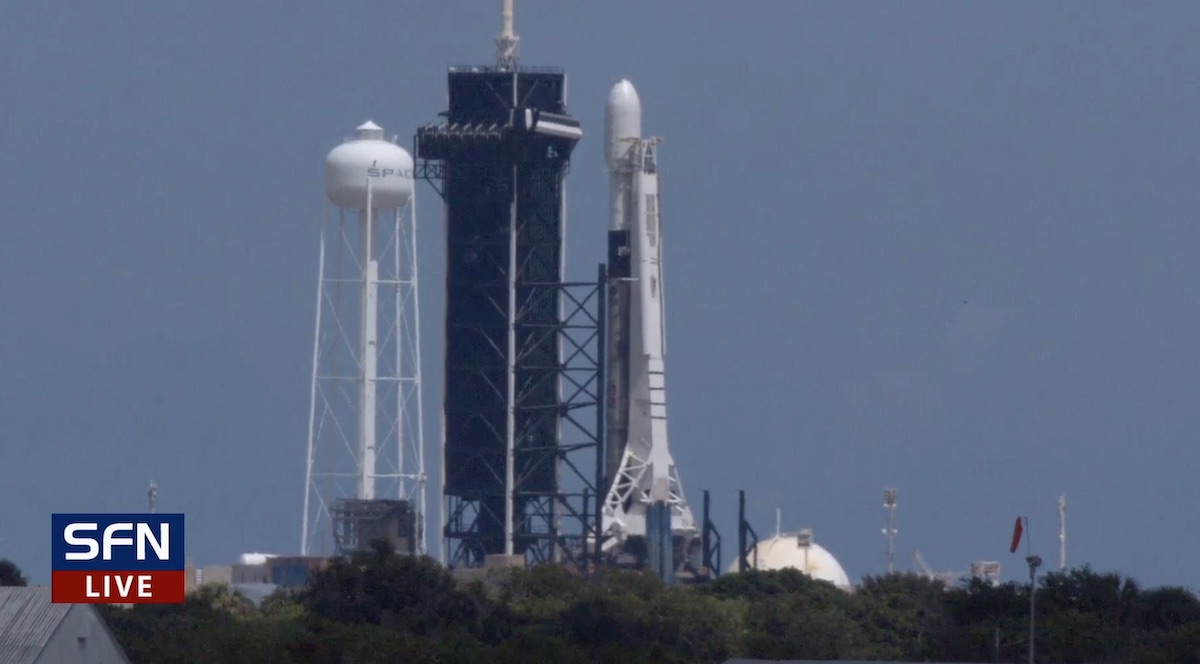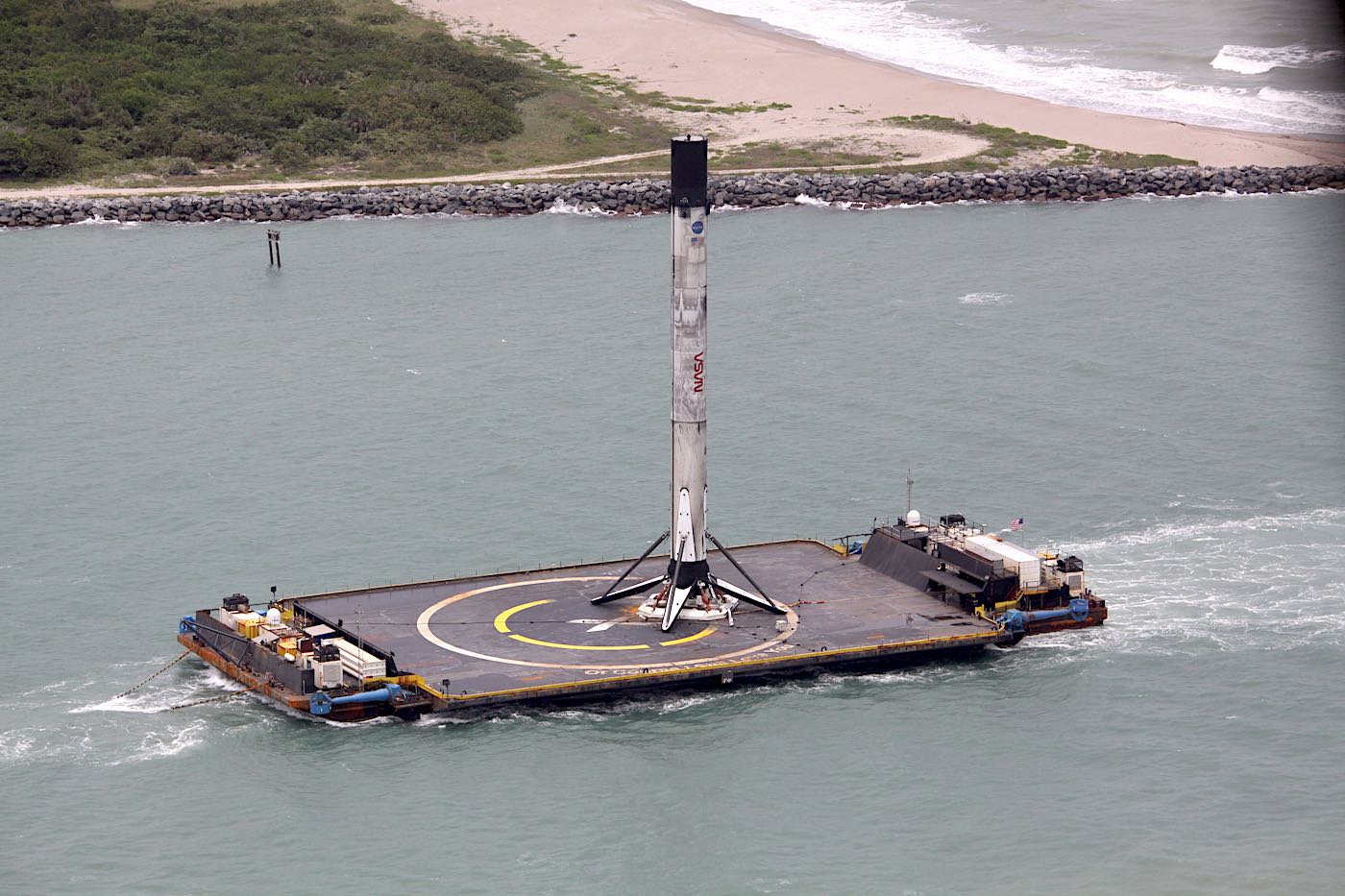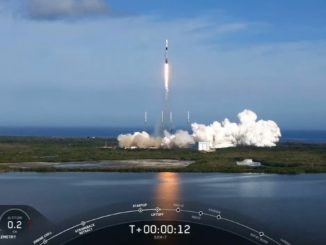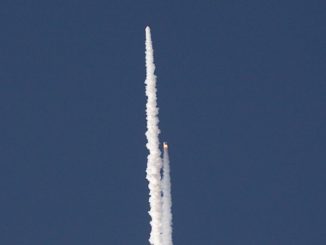
The launch of SpaceX’s next 60 Starlink satellites will wait for better weather and sea conditions after currents were too strong for the company’s rocket landing platform to hold position in the Atlantic Ocean for a launch attempt Thursday.
After scrubbing Thursday’s launch attempt, SpaceX initially said it might try again to launch the mission Friday afternoon.
But the launch company announced Thursday night that it would not proceed with a countdown Friday. It could take several days for conditions to improve enough to allow SpaceX to proceed with the launch of a Falcon 9 rocket from pad 39A at the Kennedy Space Center in Florida, the company said.
SpaceX’s drone ship “Just Read the Instructions” was dispatched to a point nearly 400 miles (630 kilometers) northeast of Cape Canaveral for landing of the Falcon 9’s first stage booster. The reusable rocket is designed to be recovered and reused.
Elon Musk, SpaceX’s founder and CEO, said the current at the landing site in the Atlantic Ocean — roughly due east of Charleston, South Carolina — was too strong for the drone ship to hold station. He tweeted that underwater control thrusters will be upgraded for future missions.
Several tropical weather systems are moving across the Atlantic, including Hurricane Teddy in the central Atlantic Ocean and the remnants of Hurricane Sally off the U.S. East Coast.
SpaceX’s two drone ships are each about the size of a football field, and are designed to hold position while the Falcon 9’s first stage descends to a pinpoint touchdown with a series of braking maneuvers using rocket thrust. The mobile platforms, converted from barges, are emblazoned with a bullseye and a stylized “X” to mark the landing target.
Recovering and reusing rockets is crucial to SpaceX’s model of budget launch costs, and is key to maintaining the company’s fast-paced launch cadence. The mission that was originally scheduled to take off Thursday will carry 60 more satellites into orbit for SpaceX’s Starlink broadband Internet network.
SpaceX has previously gone ahead with missions despite poor weather in the offshore recovery area that could risk the booster’s landing. With reusability now ingrained in the company’s launch schedule, recovery is becoming more important.

SpaceX has launched 16 Falcon 9 flights so far this year, and the company is on track to launch more missions in 2020 than in any previous year. The company’s record for launches in a single year is 21 missions, which SpaceX achieved in 2018.
Only two of those missions have launched with newly-built first stages. The rest have launched with previously-flown boosters.
SpaceX plans to launch at least two more brand new Falcon 9 boosters in the coming months. Those are assigned to launch a GPS navigation satellite for the U.S. Space Force on Sept. 30 and a Crew Dragon capsule with four astronauts on Oct. 23.
The boosters on those missions will also be recovered on offshore drone ships and reused. SpaceX has two operational drone ships based at Port Canaveral, Florida, to support rocket landings.
Launches with heavy payloads, or missions targeting high-energy orbits, use too much of the Falcon 9’s propellant for the rocket’s first stage to reverse course and land back at Cape Canaveral. Most of SpaceX’s recent Falcon 9 launches have required drone ship landings for the first stage.
SpaceX has at least six more Falcon 9 missions scheduled to launch this year for the company’s customers. They include the GPS navigation satellite launch Sept. 30 from pad 40 at Cape Canaveral Air Force Station, followed by the Crew Dragon launch to the International Space Station on Oct. 23 from pad 39A.
The company’s Cape Canaveral launch schedule for the rest of 2020 also includes a Dragon cargo mission set for launch to the space station Nov. 15, the Turksat 5A communications satellite scheduled for liftoff no earlier than Nov. 30, and a rideshare mission with dozens of small satellites set to go Dec. 16.
In addition to the missions from Florida, SpaceX plans to launch the Sentinel-6 Michael Freilich oceanography satellite Nov. 10 aboard a Falcon 9 rocket from Vandenberg Air Force Base in California. The oceanography satellite is a joint project between NASA, NOAA, the European Space Agency, the French space agency CNES, and the European weather satellite agency Eumetsat.
In between the missions for external customers, SpaceX will continue launching groups of Starlink satellites on flights every few weeks. SpaceX has launched more than 700 Starlink satellites to date, and the company plans to deploy 1,440 spacecraft to complete the first generation of the Starlink network to provide Internet service to most of the world’s populated regions.
Email the author.
Follow Stephen Clark on Twitter: @StephenClark1.



